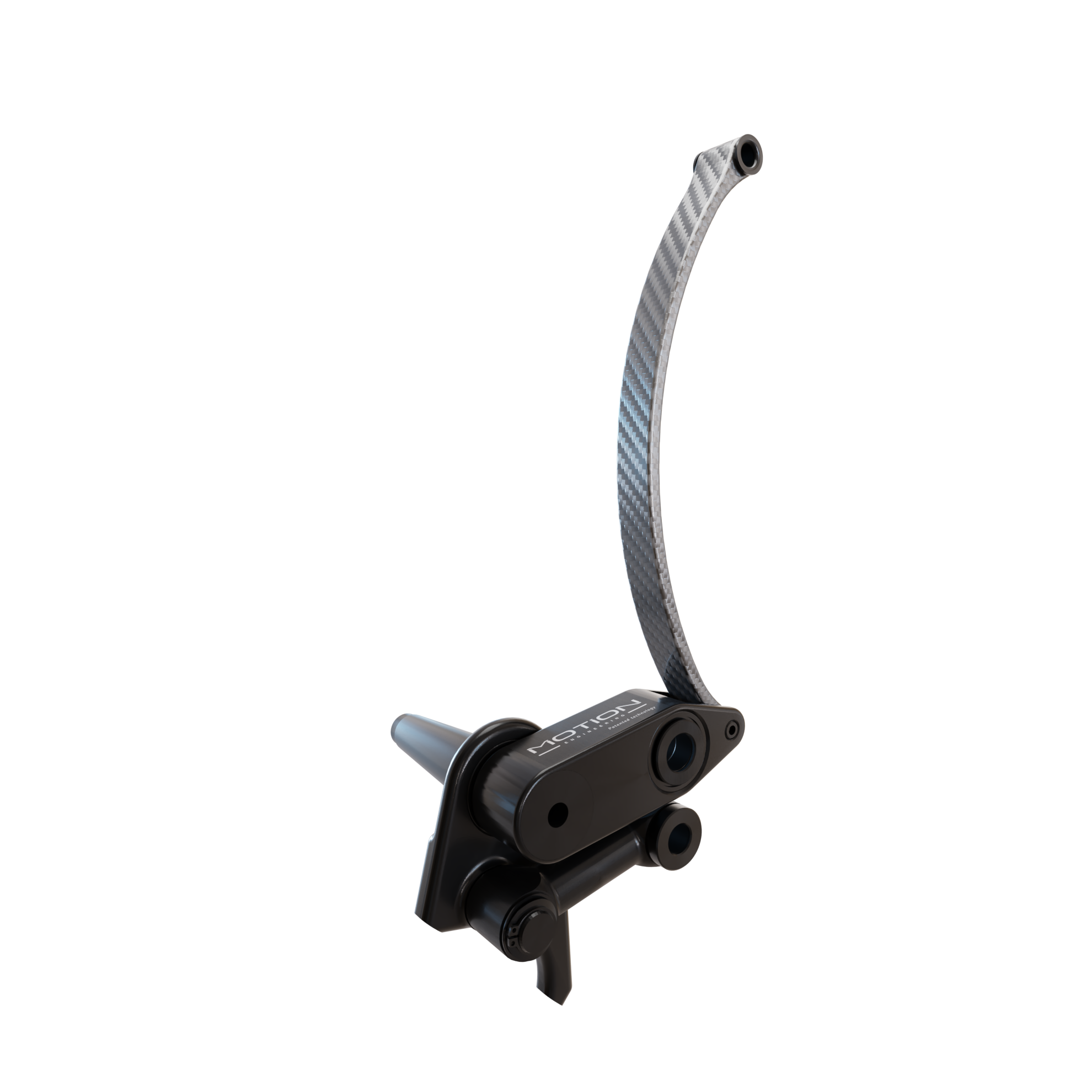OUR PATENTS
ANTI-DIVE Technology
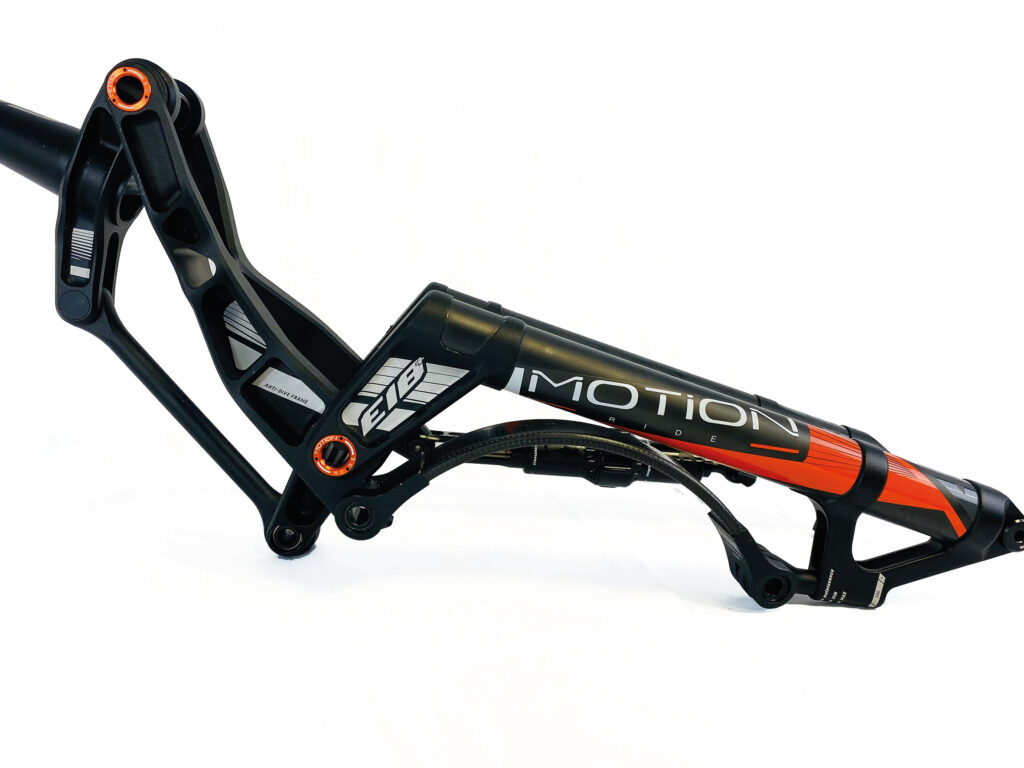
When braking with a telescopic fork, it dives even without impact, losing up to 80% of its damping capacity. The MOTION anti-dive frame is impervious to this phenomenon, maintaining 100% effective travel in any situation.
Its operation is independent of rider weight and braking power. It is not subject to any electronic or hydraulic management. Operation is instantaneous and invariable over time.
The “anti-dive coefficient” is adjustable by design.
Our technology has no limits in terms of travel and is as light as the best current constructions on the market. Frame integration and compatibility with standard components are total.
Imagine a progressive, light, compact spring whose behavior is insensitive to temperature change or heating. Imagine that this ideal spring has no mechanical friction or wear parts and therefore does not require any maintenance …
This is what the Pulled Blade MOTION technology allows.
Our technology adapts to all travels, all constraints, and all behaviors (more or less progressive) thanks to the variation of links and materials used
PULLED BLADE
TECHNOLOGY
TECHNOLOGY

ATMOSPHERIC TECHNOLOGY
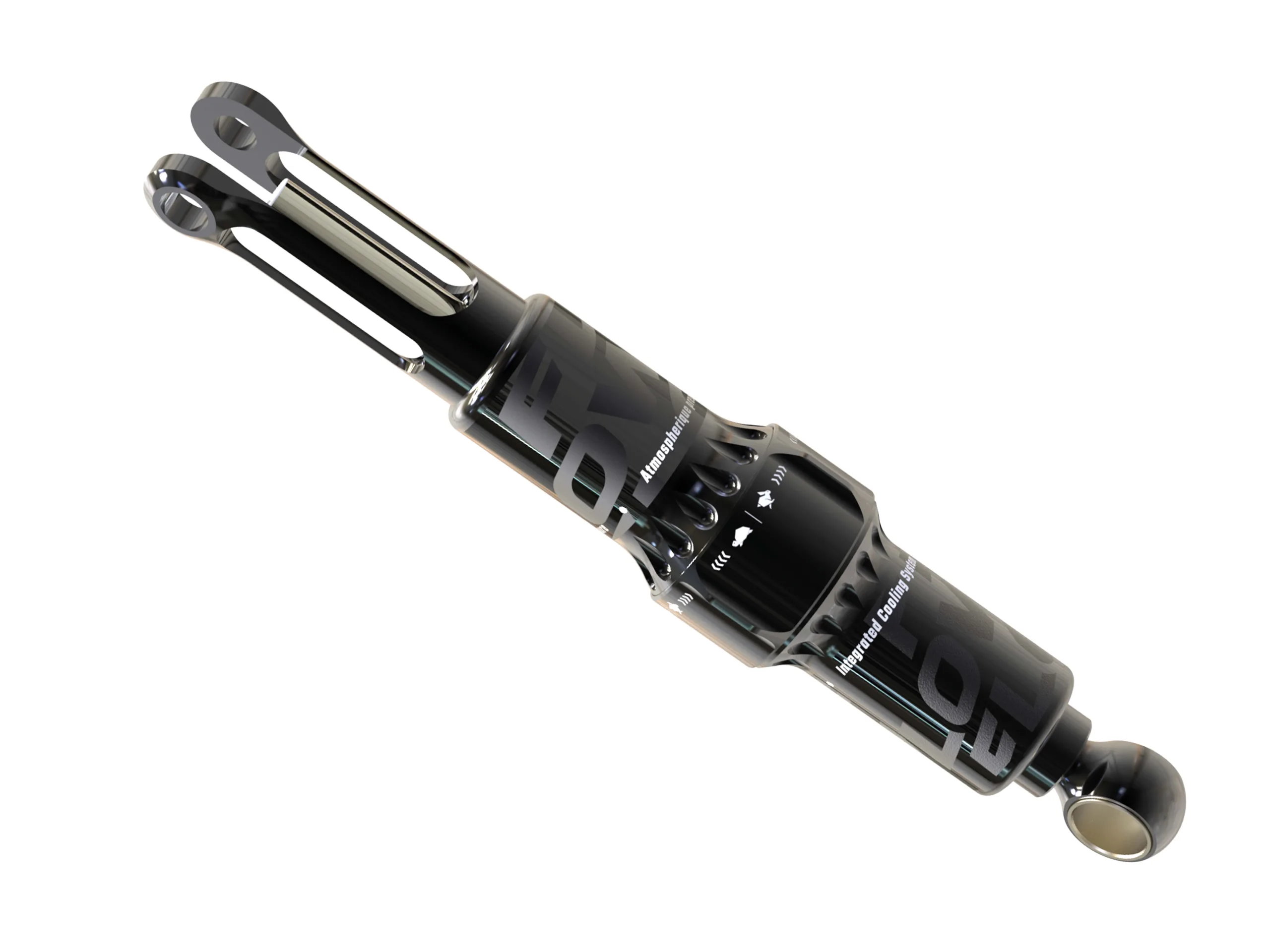
The internal pressure of hydraulic shock absorbers necessary for normal operation generates important friction in the internal floating piston (IFP) and the sealing devices. The consequence is a reduction in grip and comfort.
MOTION technology allows shock absorbers to be designed at atmospheric pressure. IFP can be removed and there is no longer a need for sealing! The shock absorber is perfectly reliable since leaks are quite simply made impossible …
Atmospheric Technology allows the creation of a self-cooled shock absorber if necessary. A secondary fluid circuit then extracts the heat from the rolling center and eliminates the overheating problem from which current technologies suffer.
Our technology adapts to all travels and all types of shock absorbers, pushed, pulled, “thru shaft” or not, air or “coil” (helical).
Evo technology consists in the complete physical seperation of the elements which set the oil in motion from those responsible for dissipating energy (rolling).
This architecture allows unlimited optimization of the rolling center and the integration of new features that revolutionize shock absorber performance: the integrated hydraulic bumpers and the high frequency filter piston . These technologies adapt to all travels and center distances and all types of shock absorbers, pushed, pulled, “thru shaft” or not, air or “coil” (helical).
INTEGRATED HYDRAULIC BUMPERS
Current shocks use end-of-stroke pads to handle the last few millimeters of rebound and compression. These buffers reduce the effective travel of the shock absorbers and therefore their performance. In addition, they do not absorb the residual end-of-travel energy but partially return it, which generates a rebound effect.
Whatever the shocks, the Integrated Hydraulic Stops allow the use of 100% of the travel and dissipate 100% of the residual energy. The gain in absorption capacity is considerable.
Thanks to a perfect management of the limit switches, the oil rolling adjustment focuses on the main area of use and can be greatly improved compared to current technologies.
EVO TECHNOLOGY
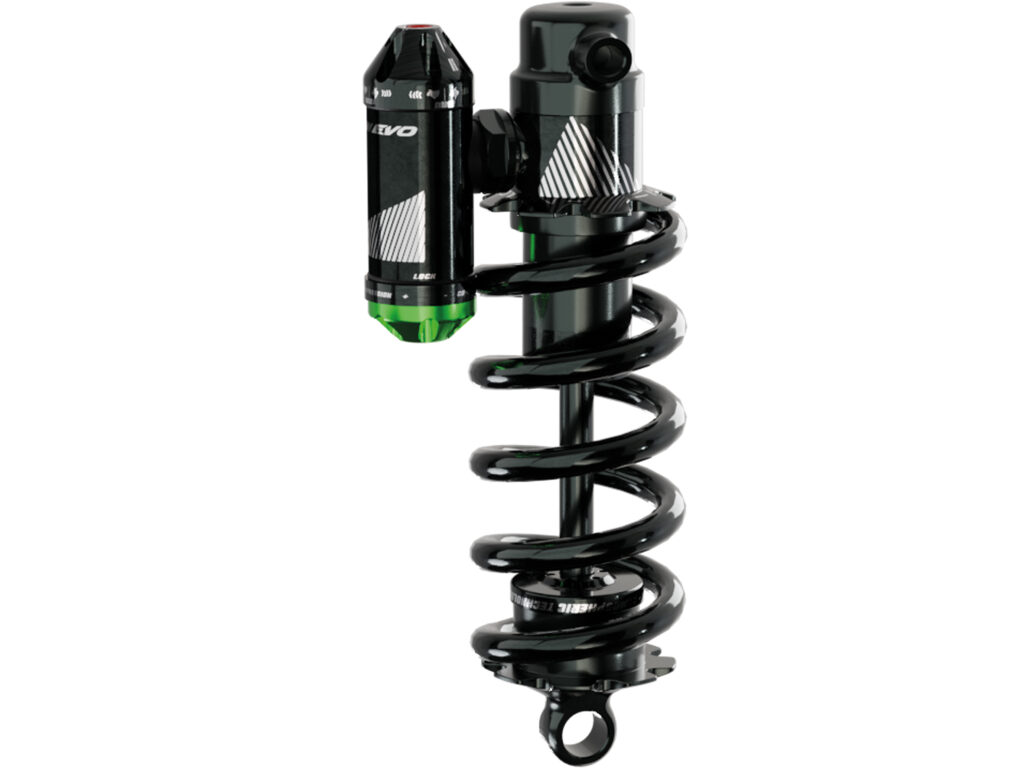
HIGH-FREQUENCY FILTER PISTON
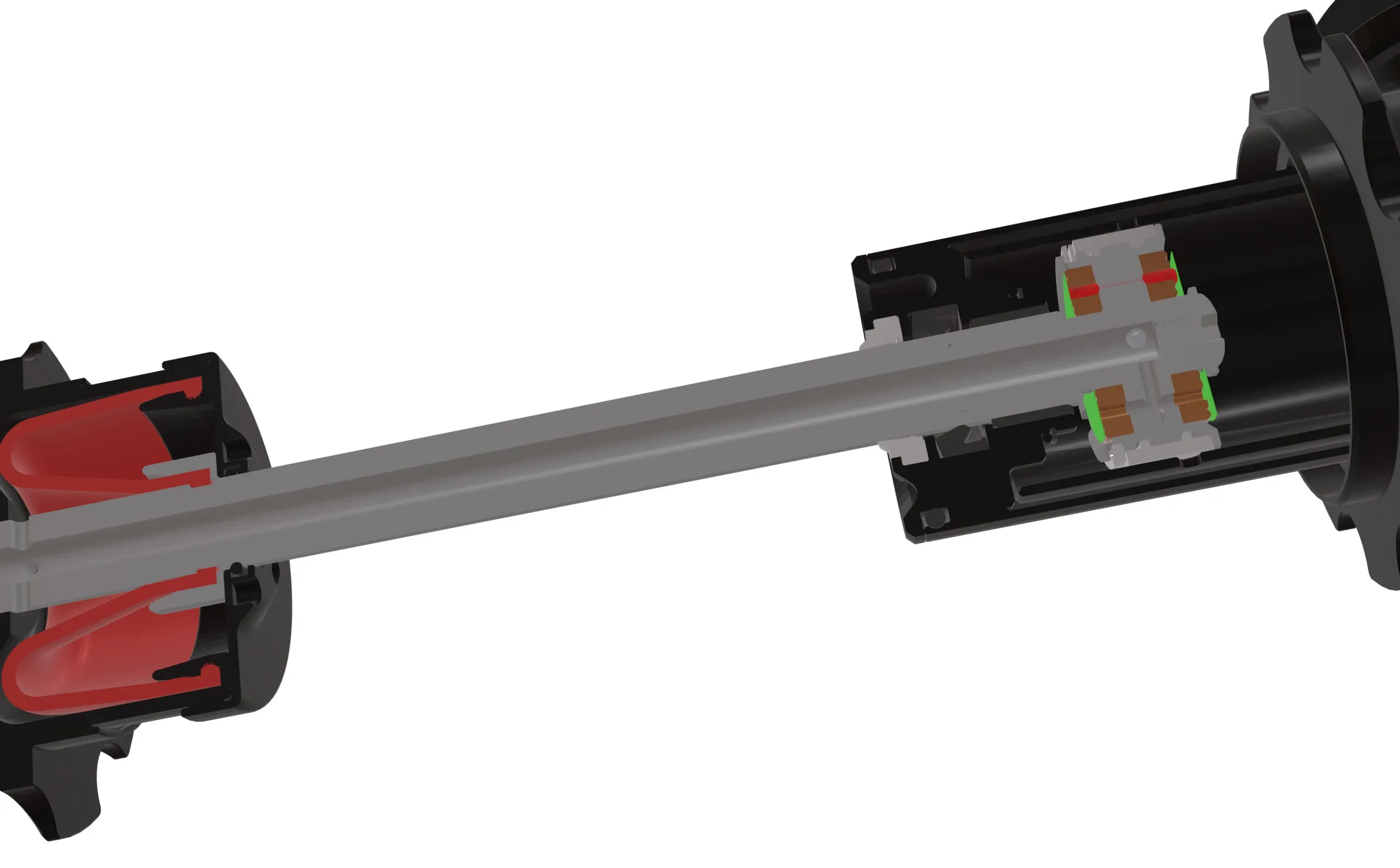
We are all looking to improve the sensitivity of the shocks in order to increase their comfort and grip performance. This is what MOTION is revolutionizing with Atmospheric technology. But once the friction is removed, the sensitivity comes up against another physical phenomenon: the dynamics. The oil has a mass and therefore opposes a resistance to its setting in motion. The higher the speeds (high frequency vibrations), the more this phenomenon grows. From a certain frequency, any shock absorber counts as a rigid element and is no longer able to absorb shocks …
We have the solution: the High Frequency Filter Piston. It’s simple, above a certain frequency, the Piston “disconnects” and no longer transmits oil movement. From now on, high frequencies can no longer be transmitted to the bicycle or the rider. The filtration performance of our technology is literally endless! The gains in comfort and grip are considerable.
The torque link © is used to manage the braking torque of a suspension mono-pivot. The rod diverts the braking forces so as not to impact the compression of the suspension.
This device optimizes the position, the arrangement and the number of parts of the suspension, allowing significant gains in terms of mass, reliability, production cost and integration.
torque link TECHNOLOGY
